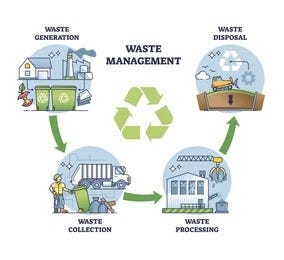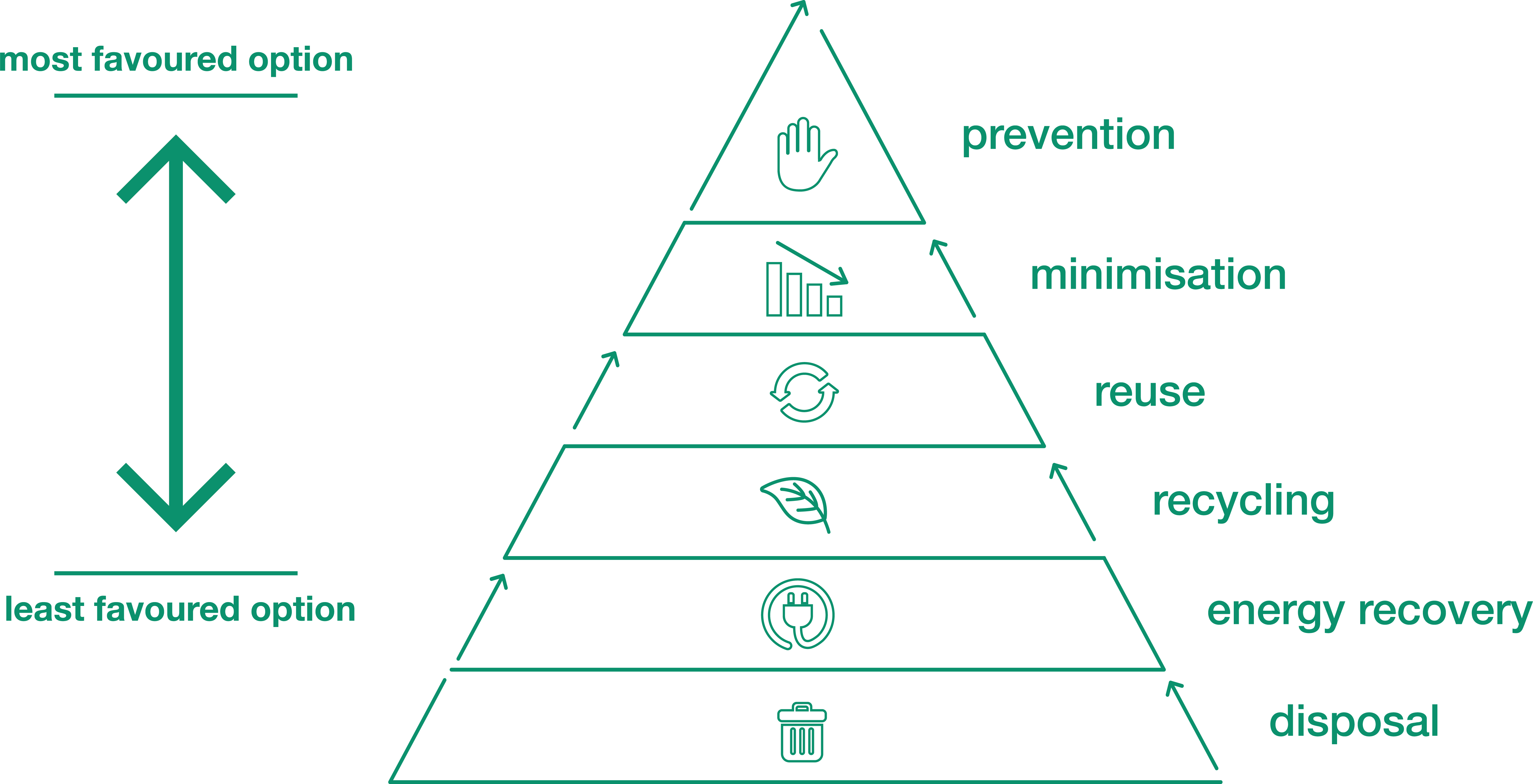Get Included with Recycling Lives Services for a Greener Future
Checking Out Different Sorts Of Waste in Modern Waste Management Systems
The modern landscape of waste management involves navigating an intricate variety of waste kinds, each requiring specialized handling and disposal approaches to reduce ecological impacts. Local strong waste, contaminated materials, electronic waste, and organic waste each present distinct obstacles and chances for source healing. Ingenious solutions such as clever waste bins and waste-to-energy technologies are arising as important devices in boosting effectiveness and sustainability. Comprehending these waste kinds is crucial for cultivating public recognition and encouraging energetic engagement in lasting techniques. What methods can efficiently address these diverse sorts of waste while advertising a circular economic climate?
Community Strong Waste
Municipal strong waste, commonly referred to as house trash or waste, includes a range of discarded products produced by residential, commercial, and institutional resources within a district. This waste stream commonly includes items such as product packaging, food scraps, yard trimmings, paper, plastics, fabrics, and disposed of home products. The monitoring of metropolitan solid waste is a crucial component of urban planning and public health, requiring efficient collection, transportation, and disposal systems.
Effective waste administration systems are made to minimize environmental impact while making best use of source recuperation. Composting natural waste, such as food scraps and backyard trimmings, not just reduces landfill usage however additionally generates useful soil amendments.
Municipalities need to also attend to the logistical and economic obstacles associated with waste management. Executing pay-as-you-throw systems, boosting public awareness, and buying innovation can substantially boost waste diversion rates. By incorporating these methods, municipalities can cultivate sustainable neighborhoods, minimize greenhouse gas exhausts, and preserve all-natural resources.
Contaminated Materials

Effective unsafe waste management includes a number of crucial steps: identification, therapy, disposal, and segregation. Partition makes certain that hazardous products are stored separately from non-hazardous waste to stop cross-contamination.
Regulative structures, such as the Resource Preservation and Healing Act (RCRA) in the USA, provide guidelines and criteria for hazardous waste management. Adherence to these regulations, paired with developments in waste therapy innovations, is crucial in mitigating the threats related to harmful waste.
Electronic Waste
Electronic waste, commonly referred to as e-waste, represents a rapidly growing obstacle in waste monitoring systems internationally. This sort of waste encompasses discarded electronic tools and tools such as smart devices, computers, televisions, and other electronic home appliances. The fast rate of technological development, paired with reducing product lifespans and consumer need for the most recent gadgets, has greatly boosted the quantity of e-waste created yearly.
E-waste is particularly problematic because of its complicated make-up, usually having unsafe materials like cadmium, mercury, and lead, which present substantial environmental and wellness threats otherwise effectively taken care of. Alternatively, e-waste also contains important products such as silver, gold, and copper, which can be recouped and reused. The double nature of e-waste-- both unsafe and useful-- necessitates customized handling, reusing, and disposal processes.
Effective e-waste administration involves stringent regulatory frameworks, durable collection systems, and progressed recycling modern technologies. Public awareness and participation are vital, as improper disposal techniques, such as unlawful unloading and informal recycling, intensify environmental contamination and carcinogen. Subsequently, enhancing e-waste management techniques is important for alleviating ecological influence and recovering useful resources in an increasingly digital world.

Organic Waste
Organic waste, consisting of cooking area scraps, lawn trimmings, and farming deposits, represents a considerable part of the international waste stream. This type of waste is eco-friendly, implying it can be damaged down by microbes into less complex organic compounds. Regardless of its possibility for natural disintegration, improper management of natural waste can cause negative environmental influences, consisting of the emission of greenhouse gases such as methane, which add to climate adjustment.
Efficient monitoring of natural waste is critical for lessening these environmental effects (recycling lives services). Composting is an extensively adopted method, changing organic waste into nutrient-rich compost that can boost dirt wellness and farming efficiency. In addition, anaerobic food digestion is an emerging modern technology that official website converts natural waste right into biogas, a renewable resource source, and digestate, which can be used as plant food
Municipalities and waste monitoring entities have to carry out robust organic waste collection and treatment programs to make the most of the advantages of these procedures. Public education and learning projects can additionally play a critical duty in encouraging houses and services to separate natural waste from various other sorts of waste. By focusing on the monitoring of organic waste, cultures can lower garbage dump use, lower greenhouse gas discharges, and develop valuable byproducts for agricultural use.

Innovative Waste Administration
In the world of waste administration, ingenious techniques are transforming exactly how societies handle their refuse, going for sustainability and efficiency. These improvements include an array of innovations and techniques that boost recycling rates, decrease garbage dump dependency, and lower ecological effect. One prominent technology is the application of wise waste bins geared up with sensing units that keep track of fill degrees and optimize collection routes. This not only reduces gas consumption yet likewise lessens greenhouse gas emissions.
Another notable growth is the fostering of waste-to-energy (WtE) modern technologies. By converting non-recyclable waste into usable power with processes such as incineration and anaerobic food digestion, WtE decreases landfill problem and gives an eco-friendly energy source. Developments in chemical recycling allow for the failure of complicated plastics into their initial monomers, allowing the development of new, top notch plastic items.
Additionally, the round economic situation model is obtaining grip, highlighting the layout of products and systems that prioritize reusability and resource performance. This holistic strategy encourages markets to reduce waste generation from the outset. Via these innovative approaches, modern-day waste management systems are not only dealing with the immediate difficulties of waste disposal however likewise leading the way for a more sustainable future.
Verdict
A detailed understanding of local strong waste, contaminated materials, electronic waste, my company and organic waste, combined with the execution of cutting-edge waste monitoring options, is important for reducing ecological effects. Integrating innovations such as wise waste bins and waste-to-energy systems can enhance effectiveness and sustainability. Reliable waste management approaches not only foster source healing yet likewise promote public understanding and participation, ultimately adding to the growth of a round economic climate.
The contemporary landscape of waste management involves navigating a complicated range of waste kinds, each requiring specialized handling and disposal methods to minimize environmental influences. Local solid waste, hazardous waste, electronic waste, and natural waste each present distinct difficulties and opportunities for source healing.Digital waste, generally referred to as e-waste, represents a quickly growing obstacle in waste monitoring systems internationally. With these innovative techniques, contemporary waste management systems are not just resolving the prompt obstacles of waste disposal yet also leading click for info the means for a much more sustainable future.
A detailed understanding of municipal solid waste, hazardous waste, digital waste, and natural waste, paired with the execution of ingenious waste monitoring remedies, is imperative for minimizing environmental impacts. (recycling lives services)